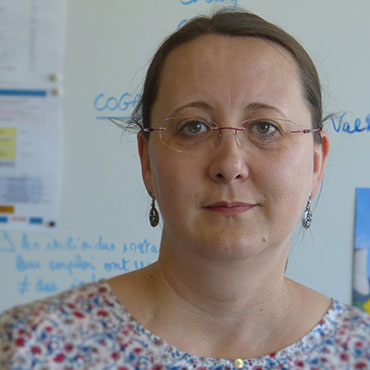講演タイトル:
原子力施設労働者国際研究プログラム(INWORKS)――低線量の電離放射線被ばくによるがん死亡リスクについての知識の向上――
Title of the speech:
The International Nuclear Worker Study (INWORKS): improving knowledge on cancer mortality risk from low-dose exposure to ionizing radiation
講演概要:
現在の放射線防護システムは、急性被ばくおよび中線量・高線量の被ばくを受けた人々の研究から導かれた放射線リスクモデルに大きく依拠している。このようなリスクモデルを長期的な低線量被ばくに適用するには、強固な仮説が根拠として必要である。「原子力施設労働者国際研究プログラム(INWORKS)」が設立されたのは、低線量電離放射線による長期の被ばくに関連する健康リスクの推定を直接的に定量化するための根拠をいっそう強固にするためであった。
INWORKSは、フランス・英国・米国の原子力産業に従事した308,297人の労働者を対象とする、国際的なコホートを対象とした研究で、電離放射線による個々人の詳細な外部被ばくモニタリングデータを集めたものである。プロトコル、試験対象患者基準、臓器線量計算は、3カ国間で共通化されている。追跡は、1943年から2005年にわたっており、労働年数の中間値は12年間であった。個々人の累積光子線量は0 mSvから1,932 mSv、中間値は25 mSvである。追跡期間の中間値は27年間で、合計は820万人年に及んでいる。追跡終了時の年齢の中間値は58歳であった。観察された死亡者数の合計は66,632例で、これには固形がん17,957例、血液がん1,791例、循環器疾患27,848例が含まれている。
INWORKSは、赤色骨髄の被ばく線量と、(慢性リンパ性白血病を除く)白血病のリスクとの間、および、結腸の線量と固形がんの間に、有意な関連があることを証明している。推定される被ばく線量とリスクの関係は、日本の原爆で生き残った人々のコホートから導出されたものに対応している。極めて低い線量に限定した場合(100 mSv未満)、被ばく線量とリスク間の関係の精度は低めだが、1グレイ当たりの過剰相対リスクの推定量は、線量範囲全体から得られた推定量に対して一貫性があった。INWORKSの長期にわたる追跡により、低レベル電離放射線と死亡率の関係に影響を及ぼす時間的な要素について、より精度の高い推定が可能である。また、観察された数多くの発生事象により、特定の死亡リスクの検討も可能である。
INWORKSは、低線量および低線量率の電離放射線への被ばくから成人を保護するために科学的に強固な根拠を得る上で、最も信頼性が高い証拠の一つである。
Abstract:
The current system of radiation protection heavily relies on radiation risk models derived from studies of populations exposed to acute, medium to high doses. Transporting these risk models to low protracted exposure settings necessitates strong underlying assumptions. INWORKS was established to provide a stronger basis with which to directly quantify estimates of the health risks associated to chronic, low level exposure to ionizing radiation.
INWORKS is a multinational cohort study gathering 308,297 workers in the nuclear industry in France, the United Kingdom, and the United States of America, with detailed individual monitoring data for external exposure to ionizing radiation. Protocol, inclusion criteria, and organ dose calculation have been homogenized between the three countries. Follow-up ranged from 1943 to 2005. Mean length of employment was 12 years. Individual cumulative photon dose ranged from 0 to 1932 milliSievert (mSv), with a mean of 25 mSv. Mean duration of follow-up was 27 years, for a total of 8.2 million person-years. The mean attained age at the end of follow-up was 58 years. The total number of observed deaths was 66,632, including 17,957 deaths due to solid cancers, 1791 deaths due to hematological cancers and 27,848 deaths due to cardiovascular diseases.
INWORKS demonstrates a significant association between red bone marrow dose and the risk of leukemia (excluding chronic lymphocytic leukemia) and between colon dose and the risk of solid cancers. Estimated dose-risk relationships can be compared with those derived from the cohort of Japanese A-bomb survivors. When restricting to very low doses (below 100 mSv), the dose-risk relationship demonstrated reduced precision, but estimates of the excess relative risk per Gy were consistent with those obtained over the whole dose range. The long follow-up allows for better estimation of temporal factors affecting the relationship between low-level ionizing radiation and mortality. The large number of observed events allows examining specific mortality risks.
INWORKS assembles some of the strongest evidence to strengthen the scientific basis for the protection of adults from low dose, low dose rate, exposures to ionizing radiation.



